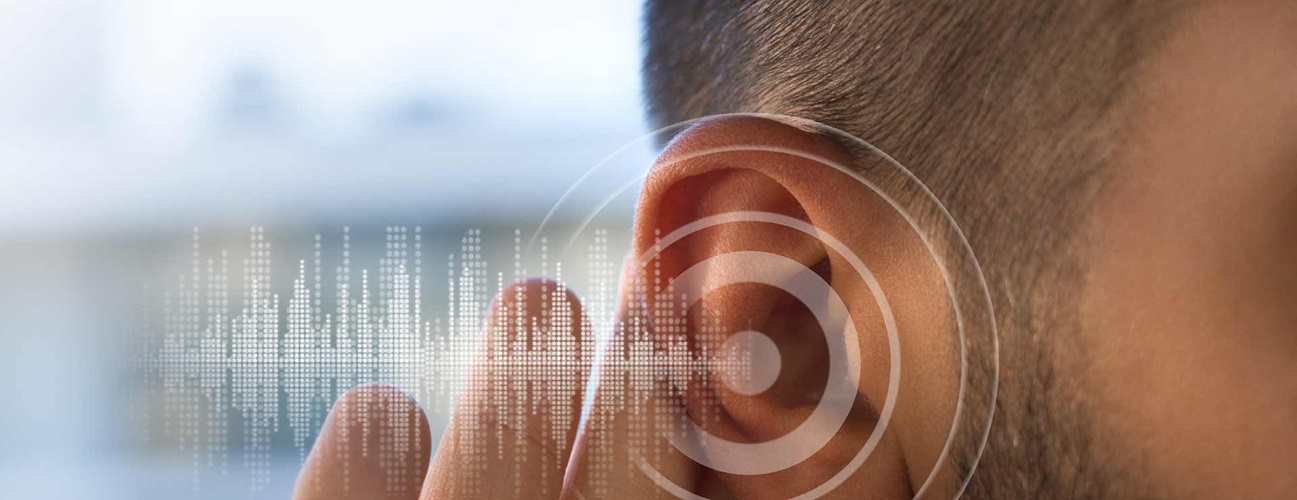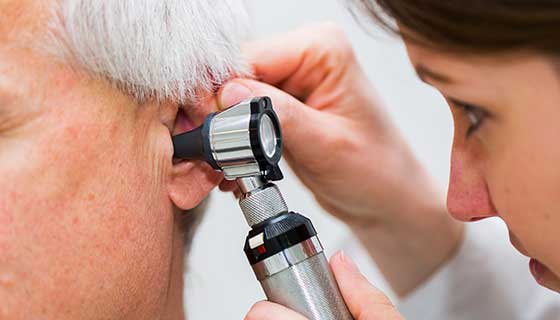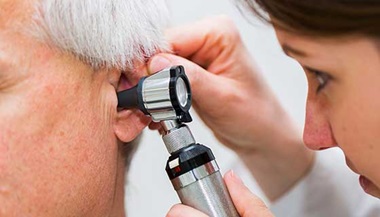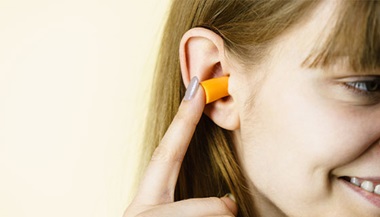Bone Conduction Hearing Aids
Bone conduction hearing aids or hearing systems, also called osseointegrated or bone-anchored devices, are an innovative technology approved by the Food and Drug Administration to treat certain types of hearing loss. There are surgical and non-surgical options for bone conduction hearing systems.
What You Need to Know
- Bone conduction hearing aids amplify sound via bone conduction, or vibrations through the bones of the skull
- There are several different manufacturers and types of bone conduction hearing systems on the market today.
- Nonsurgical devices are worn on a headband or attached directly to the skin with adhesive. Surgical devices include an internal component and an external processor.
How do bone conduction hearing aids work?
Bone conduction hearing aids amplify sound via bone conduction, or vibrations through the bones of the skull which directly stimulate a functioning cochlea (See How the Ear Works). Rather than transmitting sound via the middle ear like a traditional hearing aid, this type of amplification does not require any part of the device to be placed in the ear canal.
What options of bone conduction hearing systems are there?
There are several different manufacturers and types of bone conduction hearing systems on the market today. This technology is quickly evolving, so it is important to discuss your medical history and hearing loss with your otologist and audiologist to know what is the best option for you. Current systems include:
- Cochlear Americas BAHA
- Cochlear Americas Osia
- Oticon Medical Ponto
- Med El Bonebridge
- Med El Adhear
How will I know if I need a surgical or non-surgical system?
Nonsurgical devices are worn on a headband or attached directly to the skin with adhesive. Surgical devices include an internal component and an external processor. Your otologist and audiologist will discuss the candidacy requirements for the different available systems, and with you, decide the best option based on your medical history, hearing loss, and preferences.
You will have an opportunity to try a bone anchored processor connected to a headband during your evaluation appointment. This will provide some sense of what sound delivered through bone conduction would sound like for you.
Are you a good candidate for a bone anchored hearing aid?
Possible bone conduction hearing aid candidates may have hearing loss from:
- Malformation of the ear canal or middle ear
- Infection of the ear canal resulting in chronic draining ears
- Chronic otitis media
- Congenital atresia
- Cholesteatoma
- Middle ear dysfunction/disease
- Sudden hearing loss
- Acoustic neuroma
- Meniere’s disease
- Single sided deafness
Johns Hopkins Audiology
Our team of audiologists provides hearing testing, hearing aid selection and fitting, and implantable hearing devices for people of all ages.





